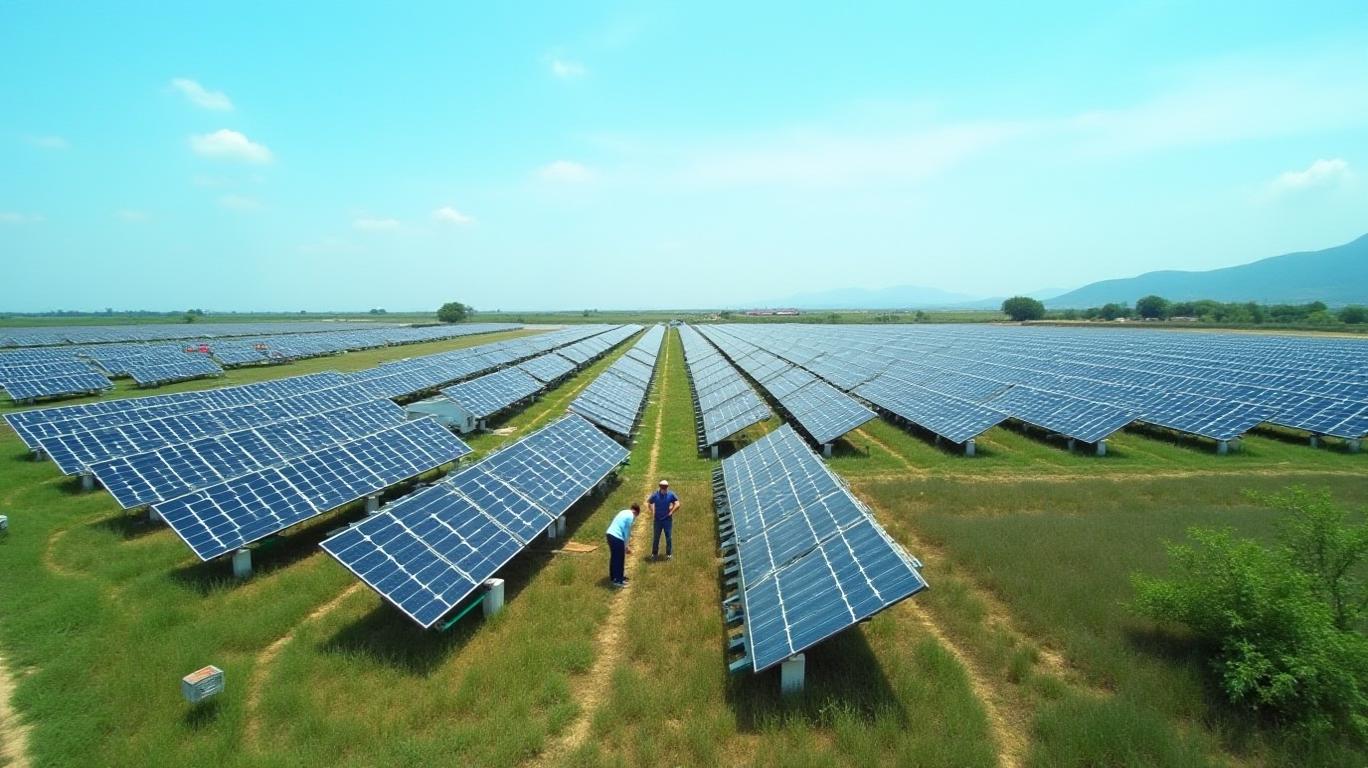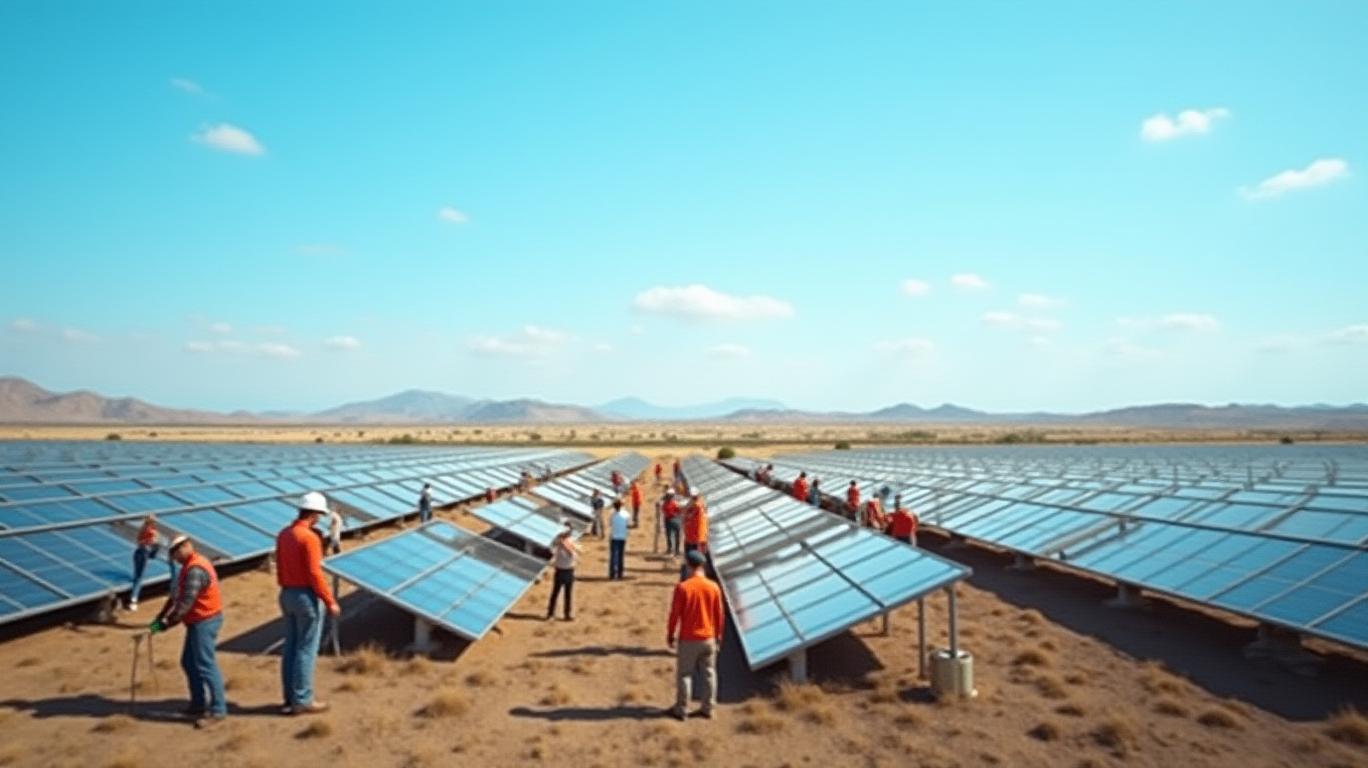Xcel Energy’s Reaffirmed 2025 Outlook: Navigating Growth in a High-Stakes Energy Landscape
Xcel Energy (NASDAQ: XEL) has reaffirmed its 2025 earnings guidance of $3.75 to $3.85 per share (EPS) despite a first-quarter stumble, signaling confidence in its $45 billion capital plan and progress on wildfire mitigation. The utility’s strategy hinges on renewable infrastructure expansion, regulatory approvals, and cost management—yet challenges loom, including rising operational expenses and trade-related risks. Here’s why investors should pay attention.

Q1 Miss, But Long-Term Vision Intact
Xcel reported Q1 2025 EPS of $0.84, a 9.7% miss against estimates, with revenue of $3.91 billion narrowly under expectations. The shortfall stemmed from higher operational costs ($81 million year-over-year increase), depreciation, and interest expenses. However, management emphasized its commitment to meeting its full-year guidance, citing its 54-year dividend streak and a 21-year track record of hitting EPS targets as proof of financial discipline.
The $45 Billion Capital Plan: Renewable Growth and Grid Resiliency
The cornerstone of Xcel’s strategy is its $45 billion capital plan for 2025–2029, focused on:
- Renewable Energy: A 5,000 MW resource plan in Minnesota includes 3,200 MW of wind, 400 MW of solar, and 600 MW of battery storage, alongside natural gas facilities.
- Grid Modernization: Projects like the Texas System Resiliency Plan ($538 million through 2028) and the Colorado Wildfire Mitigation Plan ($1.9 billion over three years) aim to boost reliability and compliance.
- Nuclear Life Extensions: The Prairie Island and Monticello plants will operate through the 2050s, providing baseload capacity to complement renewables.
Wildfire Mitigation: Costs vs. Compliance
While wildfire mitigation is critical to regulatory compliance and customer affordability, it’s also a financial drain. Q1 O&M expenses rose due to wildfire-related projects, vegetation management, and storm response. However, settlements like the Colorado Wildfire Mitigation Plan—which allows cost recovery via rate adjustments—mitigate risks. As of Q1, Xcel had settled 151 of 225 wildfire claims, with liabilities at $290 million, comfortably below its $500 million insurance coverage.
Regulatory Tailwinds and Headwinds
- Approvals: Rate cases in Minnesota, Wisconsin, and Colorado have secured incremental revenue, such as a $151 million electric rate increase in Wisconsin.
- Risks: Ongoing litigation (e.g., the Smokehouse Creek fire claims) and federal tariff policies on imported materials (e.g., Chinese batteries) pose uncertainty. Xcel estimates 2–3% of its capital plan faces tariff exposure but expects domestic sourcing to offset risks.
The Bottom Line: Risks and Rewards
Xcel’s reaffirmed guidance reflects its ability to navigate a complex energy landscape. Key positives include:
- Tax Credit Savings: Wind-related PTCs have saved customers $5 billion since 2018, with an additional $250 million projected for 2025 from nuclear PTCs.
- Demand Growth: Electric sales rose 2% in Q1, with full-year expectations of 3% growth, driven by data centers, residential electrification, and oil/gas activity.
However, risks remain:
- Cost Pressures: O&M costs are expected to rise 3% annually, while tariffs could further strain margins.
- Regulatory Delays: Pending decisions on rate cases and wildfire liabilities could impact earnings volatility.
Conclusion: A Utility Betting on the Future
Xcel Energy’s reaffirmed 2025 guidance is a testament to its long-term focus on clean energy leadership and grid resiliency. With $45 billion allocated to renewables and infrastructure and a track record of meeting regulatory goals, the company is positioned to capitalize on demand growth and federal incentives.
Yet investors must weigh the near-term headwinds—rising operational costs, tariff risks, and wildfire liabilities—against its robust capital plan and financial discipline. If Xcel can execute on its strategy, its $3.75–$3.85 EPS target remains achievable, and its carbon-free 2050 goal could solidify its status as a leader in the energy transition.
For now, the stock’s muted reaction to the Q1 miss (-1.86% pre-market) suggests investors are betting on the long game—a gamble that could pay off, but only if Xcel’s capital plan delivers as promised.
Data as of Q1 2025. Past performance does not guarantee future results.


_442a2dcc1749832873286.jpeg)
_e68fac6d1749831664430.jpeg)






